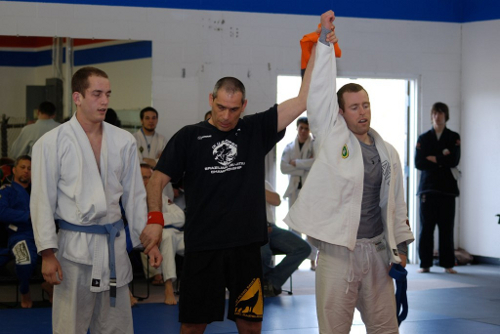Banned from many sport competitions, finger locks and toe locks are both versions of small joint manipulation. The reason for this banning is because unlike the larger joints, small joints are easily fractured, since they don’t require much leverage or power behind the attack. Finger locks in particular are easy to do, and use of these techniques, as with any of the above ones, can result in torn ligaments and bone fractures. So, once more, please do not attempt these without the supervision of a trained and careful professional.

Let’s start in on a basic finger lock technique. Once more, look at your own hand. Make a fist, and then release it, noting the range of motion. The fingers can flex inwards to form a fist, but they actually don’t have a wide range of motion in the opposite direction. There is some sideways flexibility at the first and second knuckles, allowing for fine motor control and motion, but in between each joint is a separate bone, which is actually quite small and easily fractured.
Click Here To Learn More About Brazilian Jiu Jitsu Training in Portland!
Anyone who has had their hand caught in a door jamb can tell you it doesn’t take much pressure to break a finger. In fact, unlike most bones in the human body, you can actually break your own fingers by simply biting on them hard enough (although I would recommend against doing this for obvious reasons!). If you have ever eaten carrots, it’s about the same amount of pressure.
Portland BJJ Review:
The easiest way to do a finger lock is to simply grab the opponents pinky. The reason for this finger selection is because it is the smallest, least flexible joint in the hand, and it is easily accessible, being on the outside of the hand and guard, as compared to the thumb, which is fairly strong and flexible. The same principles as the wrist lock apply, and your goal after isolating and holding the desired pinky is to simply bend it away from the opponents guard, out towards the air. If done quickly, this always results in a broken finger. If done with a different finger or speed, it makes it easier to initiate wrist locks. Should you, for whatever reason, have access to an enemy’s toes, the easiest toe to break is actually the second toe, one in from the big toe. It’s typically the longest and least flexible toe and as such will allow for easy control.



